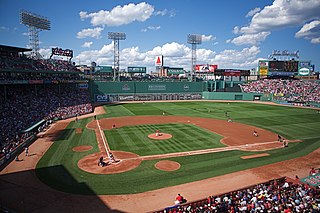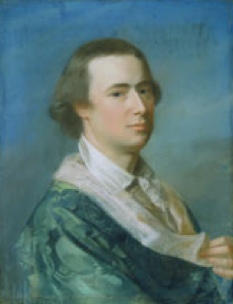
The Orpheum Theatre is a music venue located at 1 Hamilton Place in Boston, Massachusetts. One of the oldest theaters in the United States, it was built in 1852 and was originally known as the Boston Music Hall, the original home of the Boston Symphony Orchestra. The concert hall was converted for use as a vaudeville theater in 1900. It was renamed the Orpheum Theatre in 1906. In 1915, the Orpheum was acquired by Loew's Theatres and substantially rebuilt. It operates as a mixed-use hall, primarily for live music concerts.
The Columbian Centinel (1790–1840) was a Boston, Massachusetts, newspaper established by Benjamin Russell. It continued its predecessor, the Massachusetts Centinel and the Republican Journal, which Russell and partner William Warden had first issued on March 24, 1784. The paper was "the most influential and enterprising paper in Massachusetts after the Revolution." In the Federalist Era it was aligned with Federalist sentiment. Until c. 1800 its circulation was the largest in Boston, and its closest competitor was the anti-Federalist Independent Chronicle.

The Concert Hall (1752–1869) was a performance and meeting space in Boston, Massachusetts, located at Hanover Street and Queen Street. Meetings, dinners, concerts, and other cultural events took place in the hall.

The Melodeon was a concert hall and performance space in 19th-century Boston, Massachusetts, located on Washington Street, near West Street. Musical concerts, lectures, sermons, conferences, visual displays, and popular entertainments occurred there.

The Federal Street Theatre (1793–1852), also known as the Boston Theatre, was located at the corner of Federal and Franklin streets in Boston, Massachusetts. It was "the first building erected purposely for theatrical entertainments in the town of Boston."
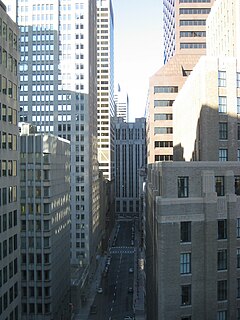
Federal Street is a street in the Financial District of Boston, Massachusetts. Prior to 1788, it was known as Long Lane. The street was renamed after state leaders met there in 1788 to determine Massachusetts' ratification of the United States Constitution.

The American Apollo was a newspaper published in Boston, Massachusetts in the late 18th century, featuring "political and commercial intelligence, and other entertaining matter." It was issued by printer Joseph Belknap, along with Alexander Young and Thomas Hall on State Street. In 1792, the newly formed Massachusetts Historical Society's "collections were at first published in ... the American Apollo. " The newspaper ceased in December 1794.
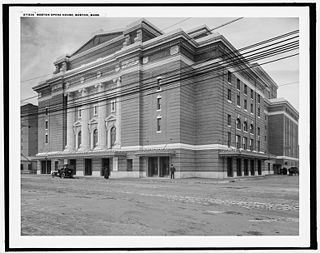
The Boston Opera House was an opera house located on Huntington Avenue in Boston, Massachusetts. It opened in 1909 as the home of the Boston Opera Company and was demolished in 1958 after years of disuse.
Barnum's Aquarial Gardens in Boston, Massachusetts, USA, was a public aquarium, zoo, and performance space located on Washington Street in the Financial District. P.T. Barnum bought the Boston Aquarial and Zoological Gardens in 1862, remodelled the space, changed the name of the business, and re-opened the collections to the public in June. In contrast to its earlier incarnation, the place became more of a show-hall than a serious scientific establishment. "Madame Lanista," who wrestled with snakes, was a typical attraction of this period. Other exhibits included a dog show and a baby show, as well as dramatic performances, which were given from Dec. 16, 1862, until the venue was closed on Feb. 14, 1863. After the Gardens were closed, their contents were moved to Barnum's American Museum in New York. Most of the exhibits were destroyed when the America Museum burned down in 1865.
Julien Hall was a building in Boston, Massachusetts, on the corner of Congress Street and Milk Street. It flourished 1825-1843, housing a variety of public events such as lectures by Red Jacket, William Lloyd Garrison; temperance meetings; political meetings; auctions; exhibitions of live animals, portraits by William James Hubard, John H. I. Browere; performances of the "automaton chess player" and the "panharmonicon;" and so on. By 1842 boxer John Sheridan had converted space in the hall into an athletic gymnasium.

Young's Hotel (1860–1927) in Boston, Massachusetts, was located on Court Street in the Financial District, in a building designed by William Washburn. George Young established the business, later taken over by Joseph Reed Whipple and George G. Hall. Guests at Young's included Mark Twain, Elizabeth Cady Stanton, William Lloyd Garrison, Charles Sumner, Rutherford B. Hayes, and numerous others.
Beethoven Hall (1874-1878) was an auditorium in Boston, Massachusetts, that hosted musical performances and other entertainments in the 1870s. It sat on Washington Street, near Boylston Street, in today's Boston Theater District/Chinatown neighborhood. In 1879 the renovated hall re-opened as the Park Theatre. The building survived until 1990, when it was razed.
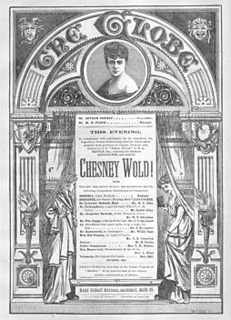
The Globe Theatre (est.1871) was a playhouse in Boston, Massachusetts, in the 19th century. It was located at 598 Washington Street, near the corner of Essex Street. Arthur Cheney oversaw the Globe until 1876. From 1871-1873 it occupied the former theatre of John H. Selwyn. After a fire in May 1873, the Globe re-opened on the same site in December 1874. Architect B.F. Dwight designed the new building. From 1877-1893 John Stetson served as proprietor; some regarded him as "a theatrical producer with a reputation for illiteracy in his day such as Samuel Goldwyn has achieved" in the 1960s. The theatre burned down in January 1894.

B.F. Keith's Theatre (1894–1928) in Boston, Massachusetts, was a vaudeville playhouse run by B.F. Keith. It sat across from Boston Common in the city's theatre district, with an entrance on Tremont Street and another on Washington Street. Personnel included Keith, E.F. Albee and H.E. Gustin. Virgilio Tojetti painted some of the interior decorations. In 1939, the theater was converted to a movie theater named the Normandie.
Theatre Comique (1865–1869) of Boston, Massachusetts, was located at no. 240 Washington Street. Personnel included Jason Wentworth, William H. Crisp, James S. Maffitt, George Maffitt, B.F. Lowell, Wm. H. Daly, orchestra leader Aug. Muller, and maitre de ballet Signor Constantine. Among the performances: slack rope and acrobatics by Martini Chiriski and the Levantine Brothers; Mlle. Augusta, danseuse; "Aladdin" with Kate Pennoyer and W.H. Bartholomew; dancing by Betty Regl; Snow Brothers ; Morlacchi Ballet Troupe; Wilson Brothers ; Ada Harland; and Jarrett & Palmer's "Forty Thieves." It occupied the building formerly known as Andrews Hall, Barnum's Aquarial Gardens, and the Boston Aquarial and Zoological Gardens. In 1869 the theatre was renamed the "Adelphi Theatre."
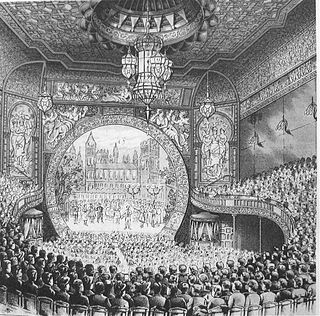
The Bijou Theatre (1882–1943) in Boston, Massachusetts, occupied the second floor of 545 Washington Street near today's Theatre District. Architect George Wetherell designed the space, described by a contemporary reviewer as "dainty." Proprietors included Edward Hastings, George Tyler, and B.F. Keith. Around the 1900s, it featured a "staircase of heavy glass under which flowed an illuminated waterfall." The Bijou "closed 31 December 1943 and was razed in 1951." The building's facade still exists. It is a pending Boston Landmark.
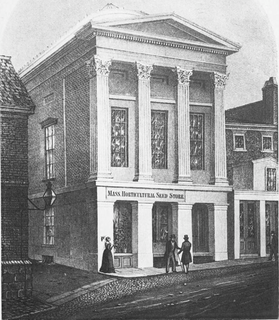
Horticultural Hall (1845-1860s) of Boston, Massachusetts, stood at no.40 School Street. The Massachusetts Horticultural Society erected the building and used it as headquarters until 1860. Made of granite, it measured "86 feet in length and 33 feet in width ... [with] a large hall for exhibitions, a library and business room, and convenient compartments for the sale of seeds, fruits, plants and flowers." Among the tenants: Journal of Agriculture; Azell Bowditch's seed store; and Morris Brothers, Pell & Trowbridge minstrels.
Joseph Harper was an English-born and early American actor and theatre manager.
